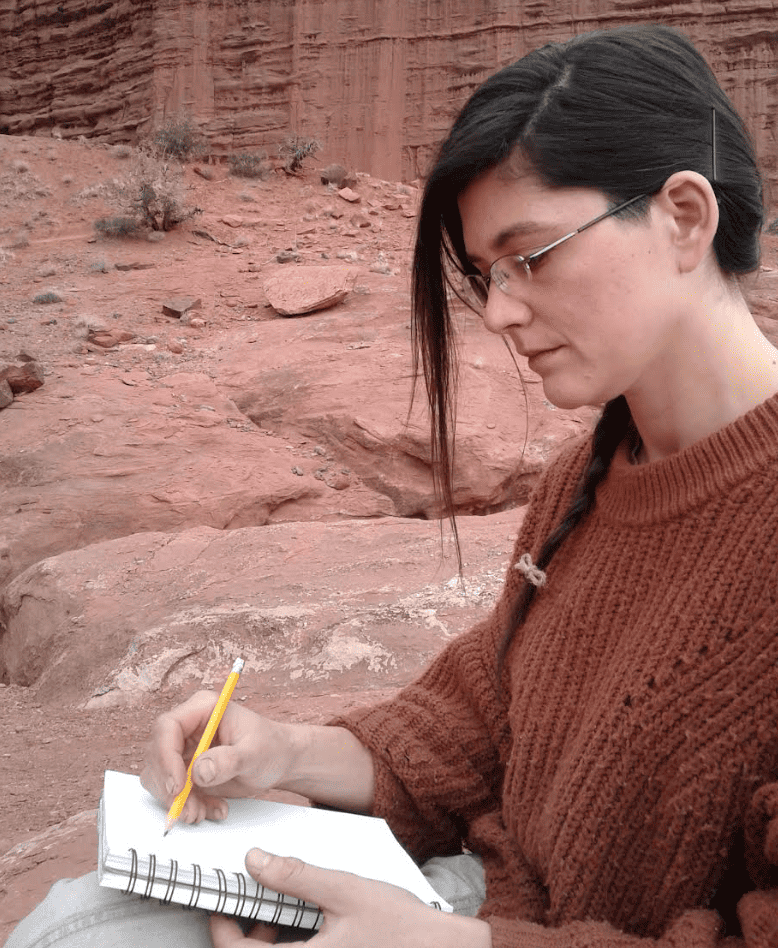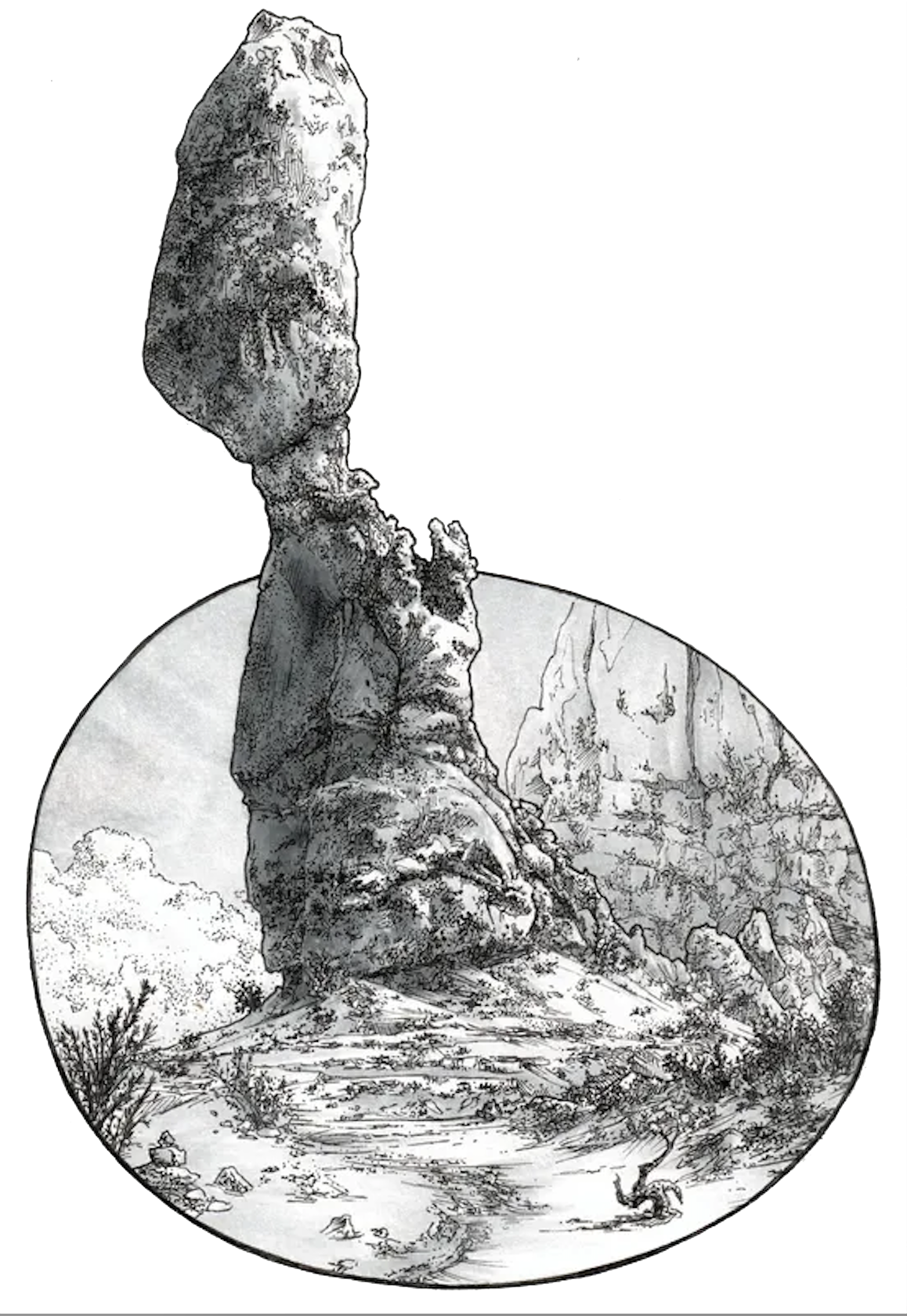Some information may be outdated.
Jess Hough’s illustration and print works depict whimsy, despite their lack of color: her works show extremely detailed mountain peaks of far-flung worlds, seaside cliffs, fantasy ruins. Her use of shading to depict light—where it falls, and the lack of it—lends depth to each work, enticing the viewer to imagine themselves within the scenes she portrays.
In 2023, Hough will use her talents to capture the wonder of the Southeast Utah Group of National Parks as the upcoming Community Artist in the Parks.

“I don’t go to the parks as often as I want to,” Hough said. “And so the idea of being involved in a program where I have to make a schedule, where I have to commit to making this time to talk about art and be in the parks and engage with all these things I would like to do more of—it just seemed really cool.”
The Community Artist Program began in 2009 as a “way to highlight the connection between local artists and the landscapes contained within the parks of the National Park Service’s Southeast Utah Group,” according to the NPS. Each year, a small committee picks a new artist to spend at least 24 hours each week from April 1 to October 31 making art in and of the Southeast Utah Group of parks, which includes Arches and Canyonlands national parks and the Natural Bridges and Hovenweep national monuments.
Hough doesn’t refer to herself as an artist, she said, despite earning a bachelor’s degree in illustration in 2015. Her profession is in construction: she first came to Moab in 2016 to work as an intern at Community Rebuilds and returned in 2021 as an assistant construction supervisor. Art has “very much been a side thing,” she said, but she also found that her construction career and art side-gig have been able to enhance each other for the better—her main medium now is intaglio printmaking, and to create those prints, she designed and built her own printing press.

In intaglio printing, the image area is below the flat surface of the printing plate; meaning, instead of relief printing, where ink is applied to the raised portion of a woodblock or piece of rubber, ink is instead applied to an etched metal or plastic plate, so the ink sinks into the recesses. In both printmaking processes, paper is rolled over the ink, but with intaglio, the paper must be very firmly pressed into the metal. While the intaglio printmaking process allows the artist to create prints with much finer details, as Hough does, it’s nearly impossible to replicate without a specialized, and expensive, printing press.
Hough was introduced to the intaglio method when she took a printmaking class, and she was immediately enamored. But the specialized press she would need to make the prints was expensive, and wouldn’t fit in her one-bedroom apartment anyway.
“I was looking online to see what options there were,” she said. “Unfortunately, what I was finding was a lot of articles like ‘how to make a $2,000 printing press for only $500,’ which was still too much, and on the other end of the spectrum, articles like ‘you could try standing on a rolling pin.’ I was like, I really need something in the middle.”
Using her construction knowledge, she designed and built her own press entirely from scratch. During the parks program, she plans on using field time to sketch illustrations, and she hopes she can lug her printing press out to the visitor center to create on-the-scene prints. She’s also been experimenting with making her own paper, she said, and incorporating local clay into it.
“I’m really excited about it,” she said. “It’s been such a journey to be able to get all the pieces together, and I’m really excited to talk about it with people and of course, to go out in the parks and spend more time drawing.”
Hough won’t start the program until April, but until then, you can follow along with her work at www.opusmixtum.com.
Appreciate the coverage? Help keep local news alive.
Chip in to support the Moab Sun News.





